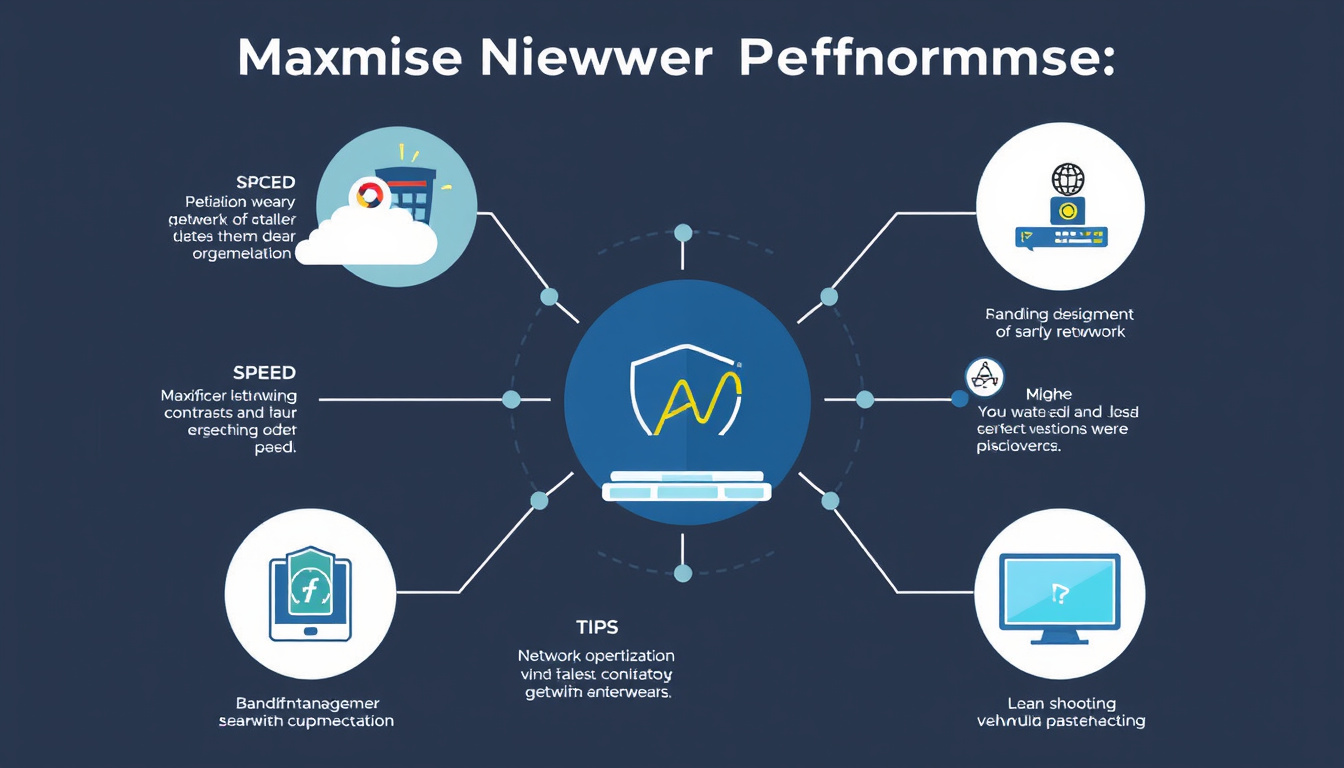In today’s digital age, network performance is crucial for ensuring that connections are fast, reliable, and capable of handling today’s demanding applications. Whether for personal use or in business environments, understanding and maximizing network performance can significantly enhance user experience and productivity. This article delves into the key metrics of network performance, the factors affecting it, and actionable strategies to optimize your network.
Understanding Network Performance
Network performance refers to the quality and efficiency of a network, typically measured through several critical parameters:
-
Bandwidth: This is the maximum rate at which data can be transmitted across a network, often measured in bits per second (bps). Higher bandwidth allows for transferring larger amounts of data more quickly.
-
Throughput: This metric denotes the actual rate at which data is successfully transmitted. Throughput may often be lower than the bandwidth due to various factors such as network congestion or errors.
-
Latency: The delay experienced in data transmission, expressed in milliseconds (ms). Factors such as distance and network traffic can contribute to increased latency, affecting real-time applications negatively.
-
Jitter: This is the variability in packet delay, which can disrupt the smooth flow of data, particularly in streaming or voice applications.
-
Error Rate: This metric accounts for the number of corrupted bits received compared to the total transmitted. A high error rate can lead to data loss and requires remediation.
Factors Influencing Network Performance
Numerous elements can impact how a network performs. Understanding these can help in troubleshooting and enhancing efficiency:
-
Network Traffic: High volumes of simultaneous users can overload bandwidth, resulting in packet delays and loss. Managing peaks through better load distribution can alleviate traffic issues.
-
Network Configuration: Proper setup of routers, switches, and access points is essential for optimal performance. Misconfigurations can lead to bottlenecks and should be rectified regularly.
-
Physical Infrastructure: The condition of cables, access points, and routers can significantly influence performance. Routine maintenance and equipment upgrades can mitigate potential risks.
-
Security Protocols: While necessary for protecting data, excessive security measures can slow down network performance. Optimizing these measures without compromising security is crucial.
-
Service Provider Limitations: Sometimes, the issue lies with the ISP. Lack of sufficient bandwidth or problematic service can degrade performance. Consider upgrades or alternative providers if necessary.

Best Practices for Optimizing Network Performance
To ensure seamless connectivity and efficient data flow, consider the following strategies:
-
Monitor Network Performance Regularly: Use monitoring tools to assess performance metrics like latency, bandwidth, and error rates. Continuous monitoring helps identify issues preemptively.
-
Conduct Speed Tests: Regular performance evaluations through speed tests can help users understand current network capabilities and highlights areas for improvement.
-
Adjust Bandwidth Allocation: Implement quality of service (QoS) settings that prioritize sensitive traffic, such as video conferencing, to ensure stable performance during peak usage.
-
Optimize Network Design: Analyze and refine the layout of your network. Placing access points strategically to reduce distance and obstacles can enhance Wi-Fi coverage and speed.
-
Update Equipment: Regularly upgrade hardware, such as routers and switches, to leverage improved performance features and increased capacity.
-
Implement Load Balancing: Distributing incoming traffic evenly across multiple servers or routes can prevent congestion and enhance responsiveness.
-
Evaluate and Adapt Security Protocols: While security is vital, examine security processes to ensure they do not unduly burden network performance. Utilizing advanced and efficient encryption methods is essential.
-
Train Staff: Ensure that all users understand the best practices while using the network, such as closing unused applications and managing bandwidth-intensive activities.
Conclusion
Maximizing network performance is a blend of understanding various performance metrics, identifying influential factors, and implementing effective strategies for improvement. By prioritizing these elements, users can ensure a seamless networking experience, boosting both productivity and satisfaction. Regular assessments and adaptive management of network configuration and infrastructure will help maintain an efficient and robust network as demands grow and evolve.



